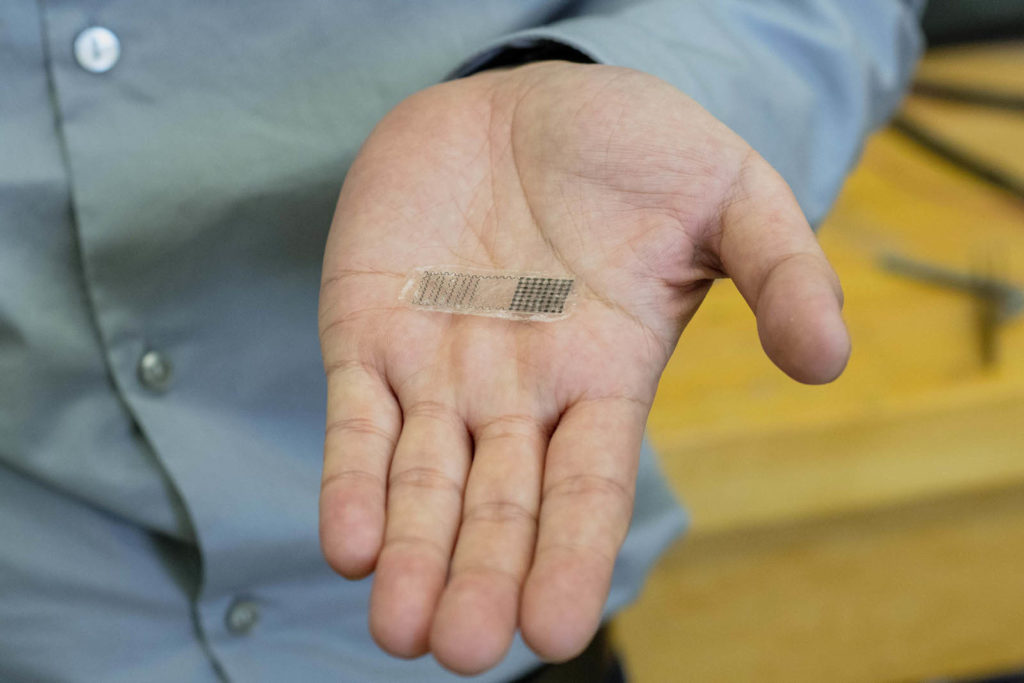
Scientists have studied the use of electricity in healing wounds, including bone fractures, but as that requires surgically implanting and removing electrodes powered by an external source, a better means of delivering electricity to bones was needed. Scientists at the University of Wisconsin–Madison have now developed that needed improvement in the form of a biodegradable implant.
The UW-Madison News Service reports that Xudong Wang, professor of materials science and engineering at UW–Madison and collaborators, including Weibo Cai, a UW–Madison professor of radiology and medical physics, have created a thin, flexible device that’s self-powered, implantable and bioresorbable, so once the bone is knitted back together, the device’s components dissolve within the body.
Bone is a piezoelectric material, meaning it produces a tiny bit of electricity when placed under strain, which stimulates factors that promote bone growth and healing. This explains why electrostimulation is an effective therapy, with stimulation of the bone directly being especially helpful. But putting a device inside the body requires a means of powering it. “The ideal case is to have the device be self-generating, which was something that didn’t exist before this,” Wang says.
To create the new fracture electrostimulation device, or FED, Wang and his team started with a triboelectric nanogenerator, a thin-film device with microstructured surfaces that converts mechanical energy produced by tiny movements into electric power. They coupled the nanogenerator with a pair of electrodes to distribute the electric field to the bone. They built these ultrathin, biodegradable and bioresorbable components on a substrate of poly(lactic-co-glycolic acid), a commonly used FDA-approved biocompatible polymer.
The researchers’ initial tests confirmed that small movements of the device did indeed create an electrical stimulation of about 4 volts, which it could sustain for more than six weeks. When the device was tested on rats, the animals implanted with the device completely recovered from a tibia fracture much more quickly than animals in a control group. After the treatment, the devices degraded and absorbed into the rats’ bodies with no complications and no need for surgical removal.
Eventually, Wang would like to scale up the fracture electrostimulation device so it will work in humans. But for these self-powered devices, the energy source can be a factor. “Typically, when someone has a broken bone, they need to restrict their movement,” he explains, which means that someone wearing a cast might not produce enough mechanical energy to power the triboelectric nanogenerator.
However, the human body provides virtually endless sources of movement that could power the fracture electrostimulation device if the broken bone must remain immobile. “We may need the device to respond to other types of internal mechanical sources, like blood pressure changes,” says Wang.
“Our continued collaborations over the last decade have been very productive and highly synergistic,” says Prof. Cai, who has collaborated with Wang to create a bandage that works along similar principles and an implantable weight loss device, among other projects. “The Wang group designs and fabricates many intriguing devices, and our group can test those in vivo in various small animal models for subsequent large animal studies and potential clinical translation.”
Wang and his co-researchers described the new bone-healing device in the journal Proceedings of the National Academy of Sciences.
 TEXTILES.ORG
TEXTILES.ORG


